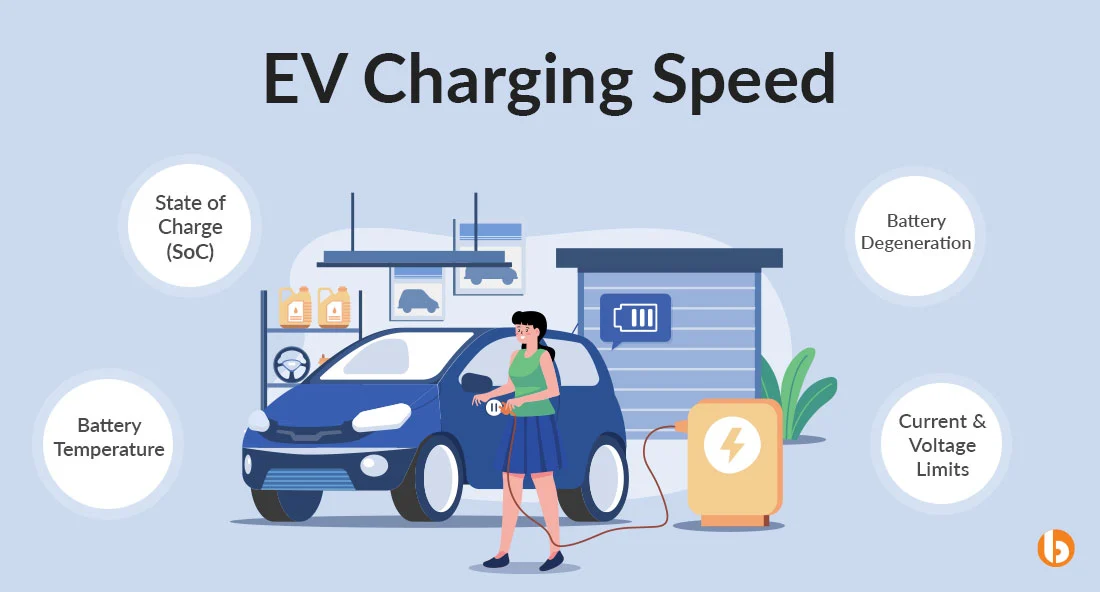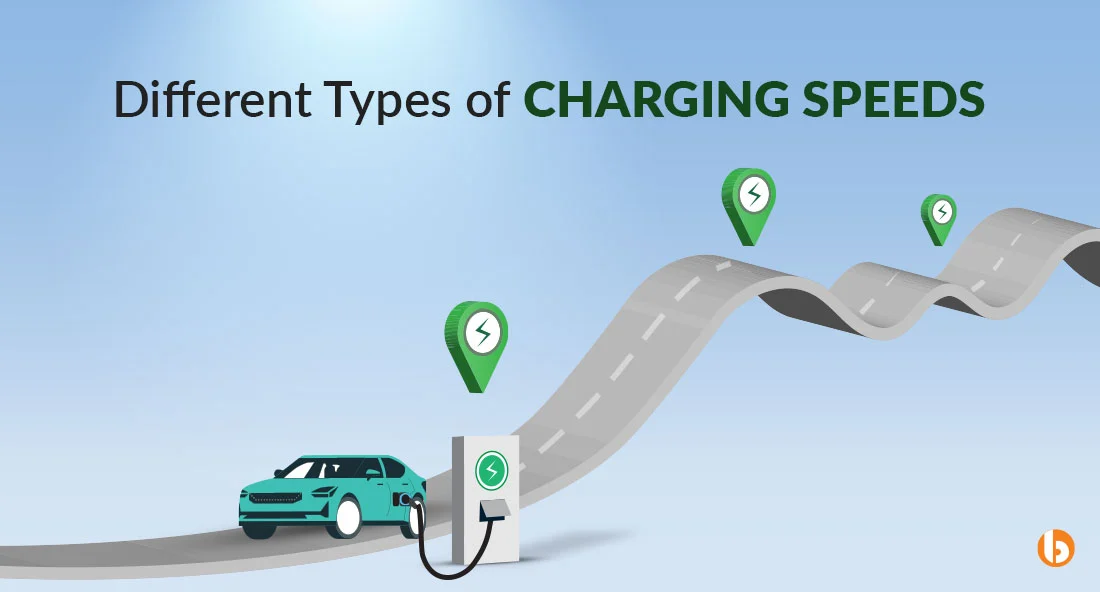The shift in people’s mindset has led to the adoption of Electric Vehicles in India. As reported in March 2023 by Statista, there are more than 2.3 million EVs in the country, among which two and three-wheeler vehicles make up about 1.1 million of the population. By 2035, the automobile industry may become fully electric.
As the number of first-time EV owners grows, the awareness of maintaining the vehicle and optimizing its health has increased. One such trend in electric mobility is seen in how people have changed the way they charge their EV batteries.
Unlike traditional fuel-based vehicles, electric vehicles are more diverse. They use charging stations for recharging the batteries, and their charging time depends on the type of charging station you plug them into. A charging station is a facility that supplies electric energy to recharge the battery of an electric vehicle. There are three main types of charging stations – Level 1, Level 2, and DC Fast, Charging station.
This article is a deep dive into the different levels of EV charging speeds and how various factors affect the time it takes for your EV to charge.
Table of Contents
EV Charging Speed Explained
The charging speed of an EV refers to the rate at which the battery is recharged. Typically measured in kilowatts (kW) and megawatts (MW), several factors influence the charging speed and the time it takes for your EV to charge, including the vehicle’s voltage and current constraints, battery degeneration, the battery’s state of charge, temperature, and other loads while charging.

- Factors Affecting EV’s Charging Speed
When charging your EV, you may encounter variations in charging speed compared to the manufacturer’s specifications. This is influenced by various factors, including:
1. State of Charge (SoC)
State of Charge (SoC) refers to the initial battery level when initiating the charging process for your electric vehicle (EV). Within the 20% to 80% range, we find optimal charging efficiency, as slower charging rates are typically observed below 20% or above 80%. This specific range allows the battery to handle peak loads and ensures an optimal charging experience.
2. Battery Temperature
As a general rule of thumb for your EV, the battery needs to be at the perfect temperature to start the charging process to protect its health. The Battery Management System (BMS) in your EV takes care of this process. It restricts the battery from getting extremely hot and cold when on charge and hence regulates the charging speed for a longer-lasting battery lifespan.
3. Battery Degeneration
While it takes time for the battery to deteriorate and lose its charging capacity, every vehicle is different, and the battery degenerates depending on its chemistry and other factors. The possibility of battery degeneration in an EV increases with time. This degradation is a natural and expected process that occurs as a result of various factors, such as charge-discharge cycles, temperature variations, and overall age, and it also affects the charging speed of your EV.
4. Current and Voltage Limits
The charging speed of an EV also depends on the voltage and current limits, as they are different for each electric vehicle, depending on the model and make. The power your EV will receive in a charge is measured in kilowatts (kW), which consists of voltage and current. The EV charger, as well as your EV, has current and voltage limits. So, when you plug in the charger, it will deliver current by matching the battery’s voltage.
To make sure you have the maximum charging speed for your vehicle, look for a charging station that will match the voltage and current limits of your vehicle.
5. Other Loads
Apart from the above factors, other loads may also impact the charging speed of your vehicle. For example, charging your electric vehicle (EV) alongside other electrical demands like air conditioning or headlights could result in a reduction in charging speed. This is attributed to the electrical load produced by these accessories, which may compete with the charging process and potentially lead to a slowdown.
What are the Different Types of EV Charging Speed?
Charging of an EV can be classified into three levels – Level 1, Level 2, and Level 3 – where the higher the level, the faster your EV will charge. These levels usually come under two types of electrical currents: AC Charging and DC Charging.

1. Alternating Current (AC) Charging
Alternating Current (AC) charging changes the flow of its current periodically, which is where it gets its name from. It is supplied through electrical grids, which makes it easy to set up an EV charging Station with fewer infrastructure modifications, making it accessible for everyone.
(a) Level 1 Charging
Level 1, AC charging is the slowest but the most accessible way of charging your electric vehicle. The process of charging your EV at Level 1 involves plugging it into a standard household electrical outlet with the electrical cable provided to you by the EV manufacturer.
The charging speed of Level 1 AC charging is slower compared to higher-level charging options like Level 2 and Level 3 (DC fast charging). It’s commonly used for overnight charging at home, making it suitable for scenarios where you don’t need a quick charge, such as when you have several hours or overnight.
Level 1 charging can be used anywhere, but the power output is limited to give you a range of charging between 1 kW and 1.8 kW through a standard 120 Volt AC charging outlet.
(b) Level 2 Charging
Level 2 AC charging charges the EV at a capacity higher than Level 1 AC charging. It is one of the common charging options for electric vehicles and is faster than Level 1 charging. This level requires a dedicated charging station, which you can place in residential areas, public parking spaces, or workplaces.
The time required to charge an electric vehicle fully with a Level 2 charger can vary significantly based on the vehicle’s battery capacity and the charger’s power output. As a general guideline, Level 2 charging can add around 16-96 km of range per hour, depending on the specific vehicle. Charging an EV at Level 2 charging can be about 5 to 15 times faster than charging at Level 1.
2. Direct Current (DC) Charging
Direct Current (DC) charging, also referred to as fast charging, is level 3 of EV charging. It uses direct current to charge an EV. With the ability to deliver 30 kW to 400 kW power, DC fast charging is a common way of EV charging for commercial charging spaces. The DC charging stations transform AC power sourced from the grid into DC power, allowing the EV to channel DC current directly into the battery when plugged in.
Typically, depending on the charging station output and the vehicle, most EVs can take between 15 minutes to an hour to get charged at Level 3, DC charging station. Since DC chargers supply electricity to the EV’s battery in the form of direct current, as opposed to AC used in Level 1 and Level 2 charging, it allows for faster charging because it bypasses the need for the vehicle’s onboard charger to convert the AC to DC.
DC charging stations come in various power levels, typically ranging from 20 kW to 350 kW or even higher for ultra-fast chargers. The charging power significantly influences the charging speed. Higher power chargers can charge an EV more quickly.
There are two major categories of DC Fast Charging designed to provide different levels of power and charging speeds. They include:
(a) High Capacity Charging
High-capacity charging refers to fast-charging solutions that provide relatively high power levels compared to standard DC fast chargers. It can deliver power levels exceeding 100 kW. These charging stations are designed to deliver a significantly higher rate of energy transfer to the EV, which leads to reduced charging times.
This type of DC fast charging is used for EVs with larger battery capacity, like long-range electric cars, electric buses, and commercial electric trucks. It’s commonly deployed along major highways and in urban areas where vehicles need to charge quickly to minimize downtime. One of the prime advantages of high-capacity charging is reduced charging time, making it more convenient for EV users, especially for commercial and public transit vehicles that operate on tight schedules.
(b) Megawatt Charging
Megawatt charging refers to a high-power electric vehicle (EV) charging system capable of delivering charging rates in the megawatt range, typically defined as charging rates of 1 megawatt (MW) or more. This is in contrast to the more common kilowatt (kW) charging stations used for most consumer EVs.
The primary purpose of megawatt charging is to rapidly charge electric vehicles, particularly electric buses, trucks, and other heavy-duty vehicles, as well as high-capacity passenger EVs like those used in ride-sharing or taxi services. Some of the most useful applications of megawatt charging are as follows:
- Commercial Fleets:
Electric buses and trucks used for public transportation and delivery services can benefit from megawatt charging to minimize downtime and increase operational efficiency.
- Heavy-Duty Vehicles:
Large electric vehicles, such as long-haul trucks, construction equipment, and industrial machinery, often require megawatt charging to ensure they can recharge quickly and continue their work.
- High-Usage Scenarios:
In settings like airport shuttle services, taxi companies, or ride-sharing platforms, where vehicles are in near-constant operation, rapid charging is important to maximize their availability.
Effects of AC and DC Charging on EVs
AC charging at lower power levels (Level 1) is gentler on the battery and may have a minimal impact on battery life. Level 2 AC charging is generally a daily charging preference because of its availability, but frequent use of high-power AC chargers may increase wear on the battery over time.
On the other hand, frequent DC fast charging can create more stress and heat on the battery compared to AC charging. While modern EVs are designed to handle fast charging, regular use of high-power DC chargers, especially those with extremely high power levels, can lead to faster battery degradation. It’s essential to note that EV manufacturers implement various strategies to mitigate these effects, such as battery cooling systems and thermal management.
Conclusion
Choosing the right charging speed for your EV is crucial as it impacts its efficiency and longevity and shapes your EV-owning experience. Since every EV is different and comes with varying charging capabilities, it’s essential to select the correct charging speed to ensure you don’t underutilize or overwhelm the vehicle’s charging capability. Further, charging with the right level of speed can be achieved by Bacancy’s CCS2 Controller. The speed is also necessary to maintain the battery’s health in the long run, saving your money on expensive battery replacements.
Your Success Is Guaranteed !
We accelerate the release of digital product and guaranteed their success
We Use Slack, Jira & GitHub for Accurate Deployment and Effective Communication.



